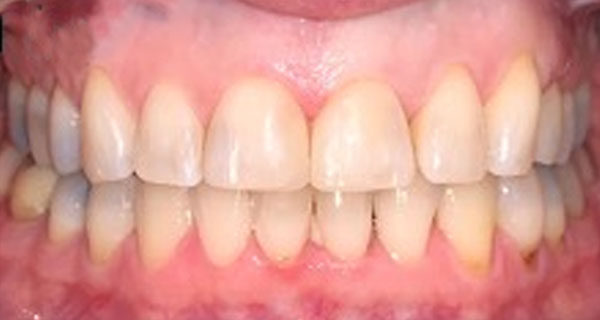There are a number of great methods for straightening teeth and many orthodontic options available for you to choose. With a professional consultation and patient compliance, great results can be achieved for all ages. Remember we are all different so the treatment options will differ from person to person and what may be suitable for a teenager with overcrowding will be different for a middle-aged person looking to improve their deep bite or functionality.
How They Work
Braces are a fixed option. They have been the more traditional option for a very long time and basically involve brackets being cemented to individual teeth and tied together by wires and rubber bands. The wire pulls on the brackets, moving your teeth and the bands holding the wire to the brackets are changed regularly to maintain tension.
These brackets can be metal or porcelain. The metal brackets are more visible and the porcelain are close to tooth coloured if you want something less obvious. The rubber bands can be coloured, chosen by you to have some fun with. You may choose your favourite colour or your footy team’s colours. Alternatively, you can go with the tooth coloured rubber bands to match your porcelain brackets.
Aligners are a removable option. There are a few different brands available but generally all involve clear, plastic trays that replicate your teeth. The advancement in technology makes them almost invisible. They work by slightly and gently moving teeth with tooth coloured attachments frequently placed on the teeth to guide the teeth into place. Moulds or 3D scans are taken of your mouth and teeth to design the custom made trays. A new set of trays will be ready to go before each of your visits and the number of visits and trays will depend on your individual course of treatment.
Visibility
Braces are the more visible option and there are metal and porcelain brackets (having said that, even gold has been done!). The brackets can also be fixed to the tongue and palate side of your teeth making them less conspicuous without losing the benefit of the power of braces.
Aligners are virtually invisible. They are well hidden in photos or can be quickly removed for those all-important selfies. However, the tooth coloured, button like attachments may be placed a few teeth and may give the appearance you’re wearing porcelain braces.
It should be noted that both the elastic components of fixed porcelain braces and the plastic of clear removable aligners can stain quite quickly in heavy smokers.
Comfort
Braces will have initial discomfort when placed or when brackets, wire and bands are changed or adjusted. These fixtures can also cause some soft tissue irritations. There may be discomfort when eating and you may need to change your diet at times. However, once you get used to the braces you will forget they’re even there.
Aligners are not painful however there may be some initial discomfort with each new tray as you get used to the change. There is no difficulty with eating and no issues with food getting caught. The trays are custom made to fit your mouth and teeth and therefore, there are no protruding materials. Unlike with braces there are typically no cuts or grazes or ulcers on soft tissue such as gums cheeks and tongue.
Hygiene
Braces require no extra cleaning other than regularly brushing. While flossing is possible, it can be tricky. There are many interproximal brushes on the market to clean in between your teeth as floss normally would. Due to this difficult hygiene you may experience some tooth discolouration. It will be sometimes uncomfortable and difficult to eat sticky and hard foods and these should be avoided as they can lead to wire and bracket breakage or even brackets popping off a tooth.
Aligners must be removed before eating and drinking anything other than water. You must brush after each meal to avoid staining of the aligners and regularly floss. To clean your aligners simply follow the aligners cleaning system or brush and rinse them using luke warm water.
Convenience
Braces are fixed to your teeth so they aren’t going anywhere, with good eating habits and oral hygiene that is! These habits will also help with less visits to your dentist due to any breakages. The time you will have your braces range from around 9-24 months. Your visits will be around every 3-4 weeks depending on what system you go for.
Aligners are removable appliance and for this reason, it is convenient and more comfortable when eating as you simply remove them and clean afterwards. In saying that, for the same reason it can become a hindrance because you must remember to take them out, where you put them and to put them back in. Some people may be conscious removing them in some work or social settings. Aligner treatment is for a shorter period of time and you must be disciplined. It can be 6-18 months depending on what’s trying to be achieved. Aligners must be worn 22 hours a day to be effective, otherwise you will prolong the treatment time. Your visits to the dentist are around every 8 weeks as the trays are made in advance.
Cost
Braces can range from $5,500-$7,500 and Aligners can range between $2,500 and $7,500.
Remember, your treatment, goals and lifestyle will all be factors when choosing between braces and aligners The trick is to ask questions and if you need help deciding which option is best suited to you or your child, please just come in for a consultation at Smile Place Dental, we’re here to help.
To find out more information, please call us on (03) 9048 1026 or Book an Appointment Online now.


